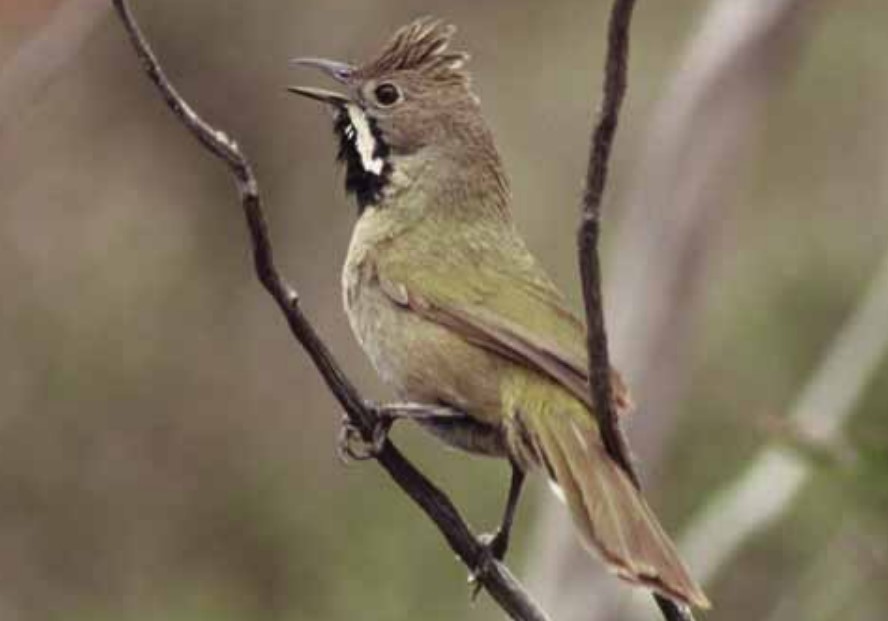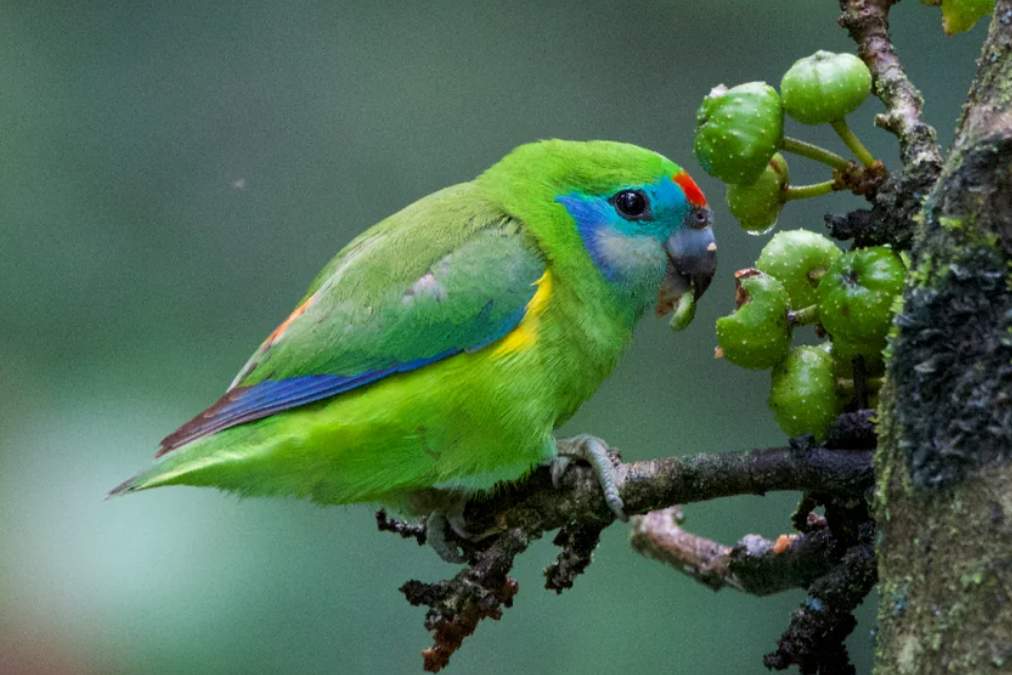Habitats: There are a variety of habitat types related to Western Whipbird in the Murray Mallee, including dense mallee or mallee-heath habitat. These types of habitats can be found along limestone ridges, interdunal flats, and sand dune slopes. To allow genetic flow through a population, or to allow birds to escape harsh conditions, large patches of habitat are required, or a series of smaller patches are connected well. Usually heard only in winter and early spring, this mallee bird has a loud, unusual song likened to a squeaking gate. Whipbird is actually named after an Eastern Whipbird, which makes a loud whipcrack sound when chirped.
Discovery: Western Whipbirds can be so difficult to see that the ornithologists who first discovered them in the Murray Mallee collected their nests and eggs. They heard their strange calls there for more than ten years before they finally found them.
Singing: The Western Whipbird’s song is more of a repetitive rising tinkling rather than a whipcrack. Often, males start the singing sessions and then turn the phrases over several times before the females join in. In the dense mallee heath shrubbery where they live, the pair may sing antiphonally for several minutes. Winter is a season when the song is uttered much more frequently than in other seasons. Summer, however, is when the song is only given before sunrise, as pairs reaffirm their territories and their relationships.
Call: Western Whipbirds use a single note, chur, that can range from loud and harsh when repeated to soft when sung alone.
Song: The song of the Western whipbird has two variations, both rising grating series of whistles, for teachers’ pets probably given by the male, and titickerr-tear probably given by the female, in call-and-answer fashion.
Territories: A pair that has established itself holds a permanent territory of about 10 hectares, with a core of two or three hectares. In their territory, the pair works together, bounding through the shrubbery, feeding close to the ground, and digging in the litter. They rarely travel more than 100 meters apart.
Diet: The diet of these birds consists of a wide range of invertebrates, some seeds, and occasionally lizards. It is rare for boundary disputes to occur between adjacent territories. The brood is raised once a year.

Nest: The eggs are laid approximately 10 days after the nest is built by both sexes. A mate does not change unless the location is the same year after year. This nest is usually found in a dense round bush less than one meter in height. It is filled with fine twigs, strips of bark, and dry grass; lined with fine grass.
Eggs: One bird, perhaps the female, does more incubation and sits at night. During the breeding season, the bird lays two pale blue eggs that are sparingly spotted with black. Eggs measure approximately 27 x 19 mm and are oval in shape. The incubation period is about 21 days. Twelve to fourteen days after hatching, the young fledge.
Breeding: Chicks are fed by both parents and each takes responsibility for one when it leaves the nest, still unable to fly. It is likely that the young will stay with their parents until the beginning of the next breeding season. From July to October, nesting and breeding take place.
Alternative Names: This bird is also known as Black-throated Whipbird and Mallee Whipbird.
Size: The size of a Western Whipbird is about 220-250 mm in length.
Identification: There is little difference between the sexes, but the male is a little larger. Olive-grey is the color of the head, crest, back, wings, and tail. Except for the central two feathers, the tail feathers are broadly tipped white. There is a black throat flanked by white lines; the rest of the underparts are dull gray and the center of the belly is patchy white. Red is the color of the eyes. Black is the color of the bill. The legs are dark brown to slate-black in color. The immature bird is olive brown with a rufous-brown throat.
Distribution: The Western Whipbird used to be much more common in the malle heaths of southern Western Australia and South Australia than it is today. As a result of wildfires and clearing, they have been reduced to a few isolated pockets in both states. Several populations exist-the tip of the Eyre Peninsula, the tip of the Yorke Peninsula, the tip of Kangaroo Island, and the mallee heath on the border between South Australia and Victoria. There are several isolated groups in Western Australia in the region bounded by Two Peoples Bay, Hopetoun, Pingrup, and the Sterling Ranges. There are two races: one in the east and one in the west, both with a thin black line above the white mouth stripe.
Threat: Several native animals, including Western Whipbirds, have suffered large declines in the Murray Mallee due to the past clearing of vegetation. Because of the fragmented landscape they now inhabit, their threats are more complex and perilous. There has been a significant reduction in population size and available habitat as a result of frequent, large fires, so unless we intervene, recovery may not be possible.







